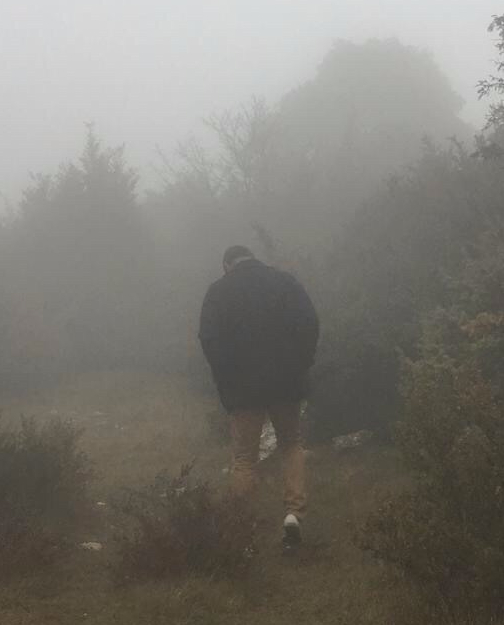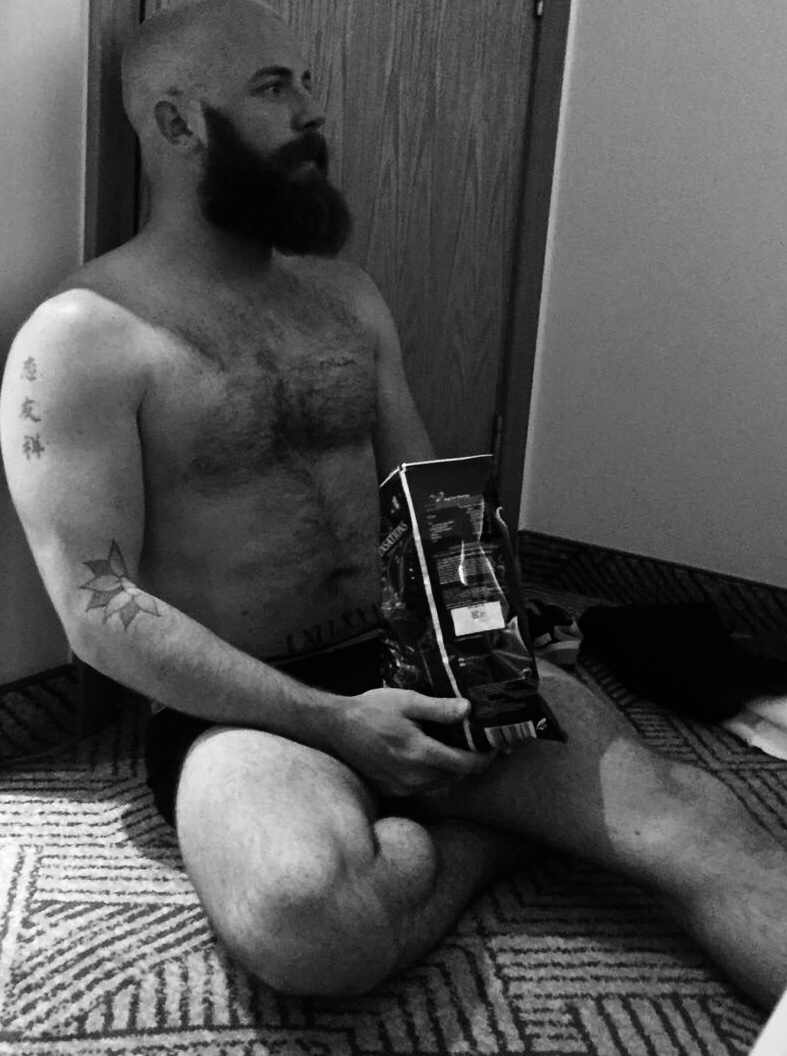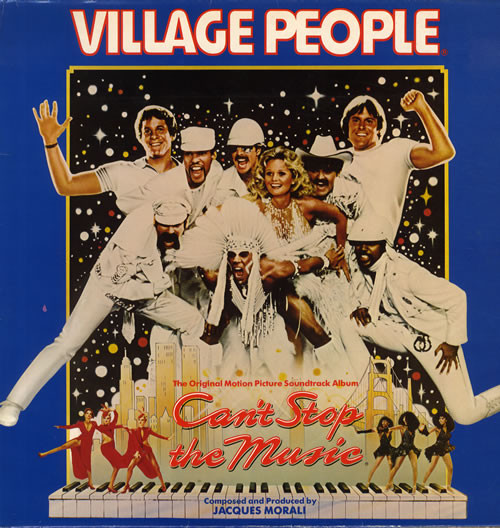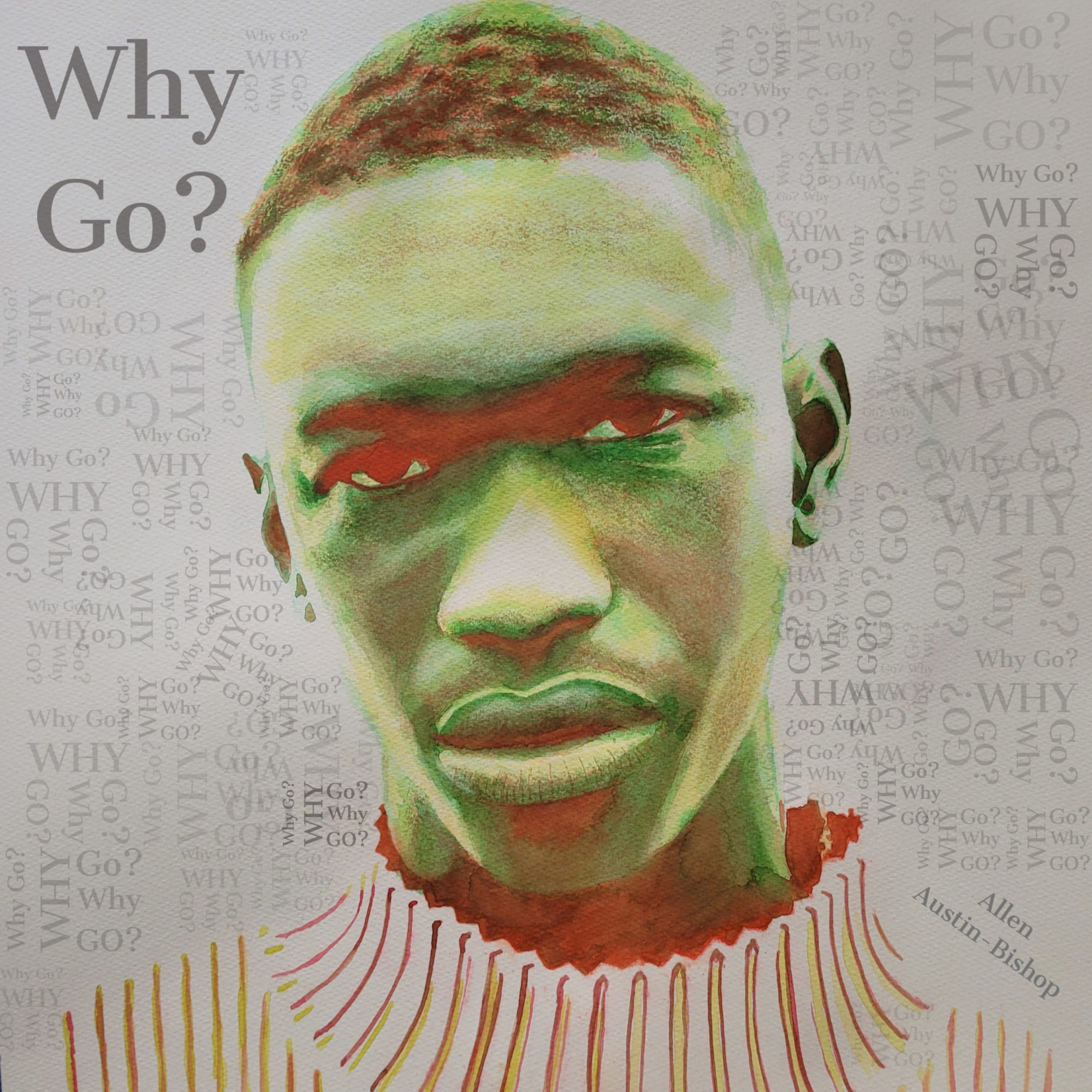When you think nothing possible,
is the moment when everything
becomes possible.
The Gospel
I looked into the Devil’s eyes,
and waited for him to preach the Gospel.

The Jazz Singer
If I won’t be remembered for my songs,
I want to be remembered for your words.
Never stop talking my love.
Never stop.

Sarah’s Poem
 Your love is like a rose.
Your love is like a rose.
With each touch,
your thorns make me
Bleed.
My love, a deep red.
As deep and as the red as the Blood at the Cross, bleeding (and dying) for your sins.
Your love is like a rose.
I give you my light, my sunshine.
You grow before my eyes,
as you wilt in my hands.
I am your reservoir.
You drink.
And drink.
And drink.
And drink, until I run dry.
And still thirsty, you drink more.
Your love is like a rose in winter.
Grey, cold…lifeless.
Naked.
Exposed.
Vulnerable.
I am your gardener.
I see your beauty during the long, cold winter days and nights.
I value your nakedness, your vulnerability.
I am your protector.
Your love is like a rose.
You only know when to love when things are good.
That’s when you bloom, with your petals ruby-red,
as ruby-red as the Blood at the Cross.
Your love is like a rose.
Each day,
you dying
for…
your…
sins.
*This poem is not about a ‘Sarah.’ But the real Sarah, Sarah Haines, who challenged me to write this, my second poem, by giving me the opening line, “Your love is like a rose…” and told me to run with it. And to her I am, as the cliché goes, I am eternally grateful.
Snow White
She is, and will forever be, an eternal victim of her own circumstances.
Jump
 Standing on the edge of the dark and cold abyss, I heard you yell….
Standing on the edge of the dark and cold abyss, I heard you yell….
“Jump!”
The Girl Who Cried Wolf
She was alone.
 That’s how she started each day, and ended each evening. An empty spot at the dinner table, the empty space in bed, those were her stark reminders. Mother, as she called her, had died some time ago. And, while she desperately tried to hold onto the memories – her childhood, her adulthood – they soon faded. The fading memories making her loneliness even greater. Nothing to cling to, but the present.
That’s how she started each day, and ended each evening. An empty spot at the dinner table, the empty space in bed, those were her stark reminders. Mother, as she called her, had died some time ago. And, while she desperately tried to hold onto the memories – her childhood, her adulthood – they soon faded. The fading memories making her loneliness even greater. Nothing to cling to, but the present.
Mother had told her to live her life, to be her own woman, and never rely on a man to provide anything to and for her. ‘The only thing you need from a man,‘ Mother would say, ‘is his seed.’ ‘He plants the seed, but you feed it, you nourish it, you protect it. You are the one who gives it life. In your belly.’
She did need him at one point. That’s why she called.
She first saw him on the train platform. Tall, with skin so dark, so dark chocolate brown, it shown a blue tint. His auburn eyes. Standing upright, standing so proud. She stared, he ignored. That moment gone. Sometime later, she saw him again, on the same train platform. She stared. He smiled. He talked. She listened. She talked. He listened. Six months later, the seed was planted. Four months later, she left, having decicded that she wanted to tend to the garden on her own. Mother was happy she, her only daughter, had wisely heeded her advice.
Mother could not prepare her for what would happen next.
She was preparing for life, not death. You don’t nourish, tend and protect with the intention that your garden will die. Her grief, beyond her explanation, beyond her expression. Silence. Mother too – swallowing her grief (and disappointment) – stayed quiet. What advice can one give on death, yet on the death of a baby? It would take a year before their silence was fully broken.
Mother was gone three years later. Loneliness descended into her life. ‘Mr Wolf,’ she cried out.
She saw him again on a train platform. Still tall, still so dark, with skin so chocolate, so dark brown, it had a blue tint. His auburn eyes. He stood upright. He stood so proud. She stared. He saw, he ignored. He stood proud. She stared. He looked. She smiled. He stood proud. She talked. He listened. She talked more. He listened. Months later, the seed was planted.
She thought the time had passed for new life to grow in her belly. Yet, something did. It started as a low, low hum. A warmth. A glow. When he held her in his arms, when he kissed her, when they made love, when he talked, when he listened, when he argued. When he touched her. When she longed for him to touch. She felt a new life growing inside her.
She was reborn
She had called for him. ‘Mr Wolf,’ she cried out, but she never thought he would come.
My Last Breath
 My last breath will be poetic justice,
My last breath will be poetic justice,
With poetry, I plan, finishing me off.
I will inhale all the letters you wrote me, exhaling them into words.
My last breath will be dramatic,
As dramatic as any Shakespearean play.
I will give new meanings to new words, created just for you.
My last breath will be music.
Each note wholed, halved and quartered. Then semi-toned.
Sung on the A’s, the E’s, and the I, O, U’s.
My last breath will be a dance.
Not a dance of death, nor the Foxtrot, the Boogaloo, or the Running Man.
You will be held in my arms, ever-so tightly,
In a waltz.
My last breath will be with you,
holding me tight, saying words, singing songs.
Embraced, in a kiss.
My last breath, my love,
will be spent with you.
You Can’t Stop the Music
 Have you noticed with some films, no matter how uninterested you are in the story or the characters, if it has the right music, and a good soundtrack, you will be humming the tune in the shower, pub, or, God forbid, at the local Karaoke pit-stop? Take for instance, The Wizard of Oz and The Rocky Horror Picture Show. Officially, these two films were box office bombs and didn’t make money until well after they left the theatres. Yet ‘Over the Rainbow’ and the ‘Time-Warp’ have etched their way into the history of ‘classic’ songs.
Have you noticed with some films, no matter how uninterested you are in the story or the characters, if it has the right music, and a good soundtrack, you will be humming the tune in the shower, pub, or, God forbid, at the local Karaoke pit-stop? Take for instance, The Wizard of Oz and The Rocky Horror Picture Show. Officially, these two films were box office bombs and didn’t make money until well after they left the theatres. Yet ‘Over the Rainbow’ and the ‘Time-Warp’ have etched their way into the history of ‘classic’ songs.
Realising that I had to write something remotely interesting in this week’s blog, I thought the blending of the visual with the audio might do the trick.
‘A PAINTER PAINTS HIS PICTURES ON CANVAS, BUT MUSICIANS PAINT THEIR PICTURES ON SILENCE’ – Leopold Stokowski
It all started with the era of silent film.
While it would be a nice to think that in combining music with film, the early directors and producers in Tinsel Town were forward thinking with artistic endeavours, in fact music was used to drown-out the noise of the very loud projector and a talkative audience. However, the accompaniment of music began to play a larger role in the presentation and entertainment value of the film. Unlike today, there were no sounds affects, meaning the music had to be used to further a story’s plot, pace and energy (which is the function music continues to play in films). As a result, the music that accompanied a film could either make or break it, insomuch that it could either vastly improve the quality and enjoyability, or completely shipwreck it.
As the industry moved from the usage of a solitarily pianist pounding away on the black and white keys, to a full blown orchestra, and eventually, to recorded sound affects and music, the relationship between film and music was guaranteed, and moving images cemented its status as the most important audio-visual medium of our time.
YOU CAN CALL ME AL
The Jazz Singer, which marked the first time dialogue and music were synchronised, began the very quick decline of the silent film era.
What’s interesting, is the film was based on the play; the play was based on the legendary Al Jolson’s life; and the star of the movie was – wait for it – Al Jolson. Even more interesting was that the early Hollywood moguls at Warner Brothers chose a pseudo-musical as the first film to introduce synchronised sound to film. In doing so, they created a new need for music – sheet music. This new need led to movie studios buying music publishing companies, gaining both catalogues of music and experienced composers.
Not only did the music in films lead to an increase in the sales of sheet music, but with the introduction of the gramophone, songs used in films could also see a dramatic increase in sales. For example, “Sonny Boy” a song featured in the second Al Jolson movie, The Singing Fool, led to 2 million records being sold and 1.25 million sales of the sheet music for the song.
DO I MAKE YOU HORNY BABY?
Even poorly constructed films, with bad acting and unbelievable story lines can use music to have the same affect.
Take the porn industry for instance –
I know you’re thinking, “how very dare you! I have not, nor will I ever watch anything so disgusting.” I beseech thee, do give me a couple minutes to make my point.
While I would never dream of insinuating that any of you fine, upstanding, worldly citizens would watch anything so unnatural, the porn industry does generate around $13+ billion in the USA alone; Hollywood generates $20+ billion. If we do the maths that means, while none of you are watching something so nasty and immoral, at least half the American population are. And those nasty, immoral degenerates are reaching deep in their wallets to get their … ummm… juices … flowing.
Have you ever tried getting ‘busy’ with your better half without making a sound? I mean NO sound. No sighs, no grunting, no shouting ‘you’re the daddy’ while daintingly swinging from the chandelier? It would be pretty boring. From what I have been told, the same is true for pornographic films. I wouldn’t know, but from what I have been told, sound and music play a major role in the cinematic enjoyment of pornographic films. While porn groove (term used to describe the music in porn), won’t make or break the film, it could change the aesthetics of the film (so I have been told).
When Talent Isn’t Enough
 TO TRAIN OR NOT TO TRAIN? THAT IS THE QUESTION
TO TRAIN OR NOT TO TRAIN? THAT IS THE QUESTION
For the past week, I have been having several interesting conversations about creative artists with some friends who asked the question ‘is formal education needed to become a creative artist?’ While my initial, knee-jerk reaction was to say, absolutely not, I think it is important that a difference is made between formal education and training. There are many well known, and unknown, artists who have had no formal education. However, you would be hard pressed to name many artists who have not had any training whatsoever- be it with an independent teacher, on the job training or an apprenticeship. I readily admit that there are some artists that are so naturally talented, they did not require any formal education or training (Jean-Michel Basquiat, Ella Fitzgerald). However, these artists are the exception, and not the rule.
Igor Stravinsky said, ‘Lesser artists borrow, great artists steal.’ I believe this to be very true. An artist’s raison d’etre is to express themselves through their artistic output. Without the basic tools of their craft they will be limited in their self-expression. When you borrow something, it is, and will never be, yours. When you steal something, you make it yours. An artist receiving training is borrowing the techniques and rules. They will never be able to call these their own. Once an artist has had training, they are able to use those techniques and rules to create something in their own voice (that’s the stealing bit, just in case you didn’t realise). Don’t get me wrong, I don’t subscribe to the ‘one-size-fits-all brigade’ (although as an aside, I do subscribe to the ‘shut your face, you silly dumbarse brigade’ – they’re a fun group). I do think that one shouldn’t be a creative artist if one doesn’t have respect and a desire to learn the foundation of their craft.
Some believe there is an argument that a creative artist can develop without being informed or constrained by the classic forms; that passion and talent is enough. I clearly don’t hold this view, and would demand that anyone with such base ideas be summarily shot at dawn (harsh, I know – that’s how much I care). Why? That kind of thinking doesn’t take into account that the foundation of the creative arts – be it film, street dance, hip-hop, etc – is built on the history (classic forms) that came before it. We wouldn’t dream of disregarding what we learned from the great masters and allow a skyscraper, no matter how passionate or talented the builders are, to be built without tried and tested building techniques being used, so why would we not accept the same for the creative arts?
So going back to the original question – ‘is formal education needed for those wishing to enter the creative arts?’ No, it’s not needed. But having it, along with passion, talent, and hard work, wouldn’t hurt.
